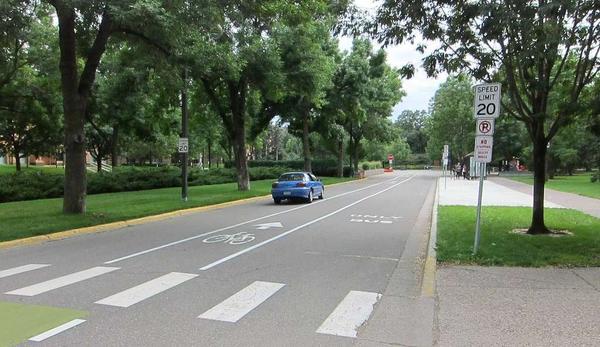
Cyclists have long believed that building bike lanes doesn’t cause car congestion – and now there are figures to back this up.
Famed data journalism site FiveThirtyEight, whose founder Nate Silver is famed for accurately predicting the results of US presidential elections, looked at traffic flows in Minneapolis before and after bike lanes were installed. The Minnesota city vies with Portland, Oregon for the title of “cycling capital of America”.
Using official traffic data, they examined 10 roads where a bike lane has replaced a car lane, and measured the “volume-to-capacity” ratio. As they explain:
“We take an estimate of the number of cars traveling in the busiest direction during peak travel time, and divide this by each road’s capacity. This gives us what traffic engineers call the volume-to-capacity ratio, or V/C ratio. This metric tells us how ‘full’ each road is.
“As the V/C ratio approaches 1, the amount of congestion increases. At V/C ratios between 0.5 and 0.75 you have mild to moderate congestion, where traffic is still moving smoothly but you might notice that it’s a bit harder to move from one lane to another. At V/C ratios between 0.75 and 0.9 you experience heavy congestion and the effect on your commute is greater. Here, traffic starts to slow down and minor incidents can cause jams. Severe congestion occurs at V/C ratios above 0.9.”
The results were startling. Of the ten streets, only one road (19th Avenue S) had free-flowing traffic before the bike lanes were painted, but “mild to moderate congestion” afterwards. Its 0.62 score was still comfortably within the “moving smoothly” category. But eight others remained comfortably below 0.5, with the last just at the border.
FiveThirtyEight’s authors, Gretchen Johnson and Aaron Johnson, say that the trick is to choose roads that are already running below capacity:
“Bike lanes don’t cause a lot more congestion if you put them on the right streets. If you cut down the size of streets that are already near capacity, you’ll create severe congestion. But if you start with roads that are well under capacity, you’ll only increase the congestion a little bit. And it may not even be noticeable. Slimming down these roads that are too “fat” is known as a road diet — and yes, that is the technical term.”
They don’t believe this is an isolated occurrence. In New York, where new bike lanes have attracted significant controversy, the same pattern was observed. Two busy junctions were still largely uncongested after the bike lane was installed, just shading above 0.5 in the rush hour.
More to the point, not only did car drivers enjoy a similar journey time to previously, but other users benefited greatly. “The number of cyclists using the road went up, and speeding cars, cyclists riding on the sidewalk and injury-causing accidents went down. The road diet isn’t just creating a space for bikers; it’s also making the street safer for other types of users.”



